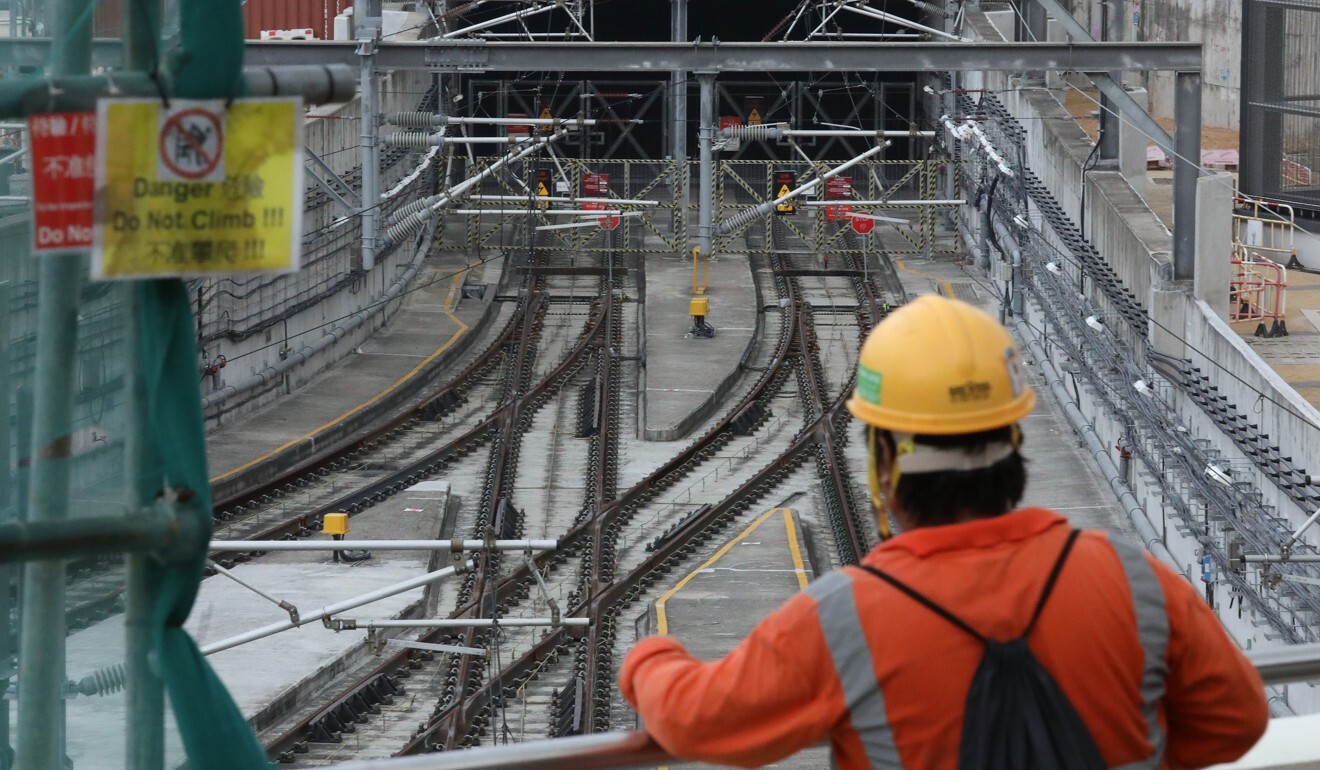
Whistle-blower on Hong Kong MTR construction scandal launches legal bid to overturn inquiry’s findings
- The commission of inquiry had ruled that Hung Hom station of the Sha Tin-Central rail link would be safe for use
- But subcontractor China Technology says panel did not have the capacity to make such a judgment
A whistle-blower at the centre of a construction scandal involving Hong Kong’s costliest rail link is suing the government-appointed commission of inquiry in a legal bid to overturn its finding that the project was safe to go live.
In a writ filed on Thursday for a judicial review, subcontractor China Technology sought a court order to quash the interim and final reports of the commission chaired by former judge Michael Hartmann on the expanded Hung Hom station of the HK$90.7 billion (US$11.7 billion) Sha Tin-Central rail link.

“The commission is fully satisfied that, with suitable measures in place, the station box structure will be safe and also fit for purpose,” the report said.
In launching the legal challenge, Jason Poon Chuk-hung, managing director of China Technology, who blew the whistle on allegations of defective work over the project in May 2018, argued the commission did not have the capacity to judge the project’s safety.
“The commission had failed to examine a lot of safety issues. How could it have the capacity to rule on the project’s safety? I would argue that its rulings are wrong,” he said.
Hung Hom station site safe, no need for demolition, inquiry panel says
The commission, set up in July 2018, had looked into allegations of shoddy work at the Hung Hom station site, a missing tranche of vital safety documents relating to the project and other construction issues.
One key allegation under examination was that steel reinforcement bars, or rebar, had been cut short to fake proper installation into couplers on the station platform.
The commission had failed to examine a lot of safety issues. How could it have the capacity to rule on the project’s safety?
While confirming the staff of subcontractor Fang Sheung Construction had cut the rebar, the report said “it was not extensive” and amounted to 2 to 3 per cent of the amount used.
But the report lambasted Leighton and MTR Corp for “serious deficiencies” in their supervision and management of the rail project while criticising the government, as the project overseer, for not detecting shortcomings quickly and taking firm action to ensure things were back on track.

However, Poon argued that the commission had no scientific evidence to support its conclusion that only 2 to 3 per cent of the rebar had been cut.
In the writ, Poon’s firm accused the commission of failing to investigate the facts and circumstances surrounding the cut of the rebar.
“It was out of a blue moon that the respondent made the ruling which refused to hear evidence related to the actual identity of the worker cutting the rebar … The ruling completely defeats the terms of reference,” it said.
MTR Corporation reports shoddy-work findings to Hong Kong police
The writ argued that without any supporting evidence, the commission jumped to the conclusion that it was Fang Sheung workers who cut the rebar and that both Leighton and MTR Corp had no knowledge of the act. “Such factual findings simply lack any evidential basis or any proper reasoning,” it said.
The Sha Tin-Central link project has been plagued by repeated delays and cost overruns. The first part of the rail link, the Tuen Ma line phase 1, which connects Wu Kai Sha to Kai Tak through Tai Wai, Hin Keng and Diamond Hill, opened to traffic on February 14, while other sections have been delayed.
Help us understand what you are interested in so that we can improve SCMP and provide a better experience for you. We would like to invite you to take this five-minute survey on how you engage with SCMP and the news.

